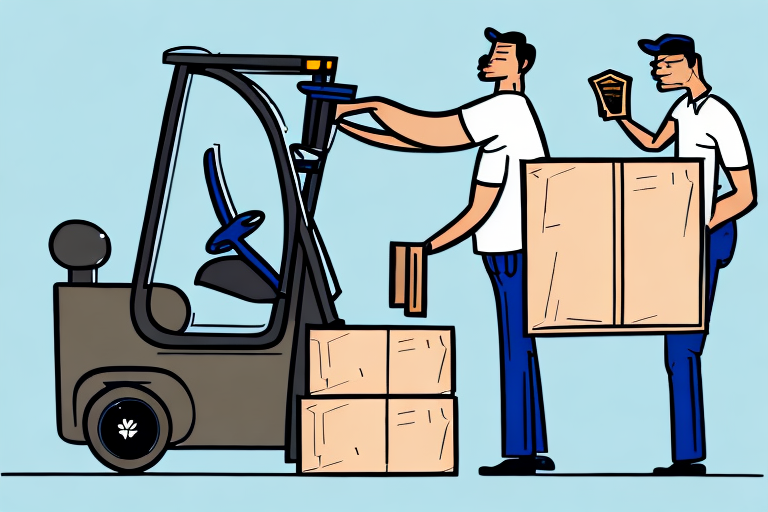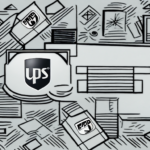UPS Damage Reported: Comprehensive Insights and Solutions
Shipping products through United Parcel Service (UPS) is a common practice for businesses worldwide. However, understanding the potential risks associated with shipping is crucial to mitigate losses. UPS damage can occur at various stages of the shipping process, leading to significant financial implications for your business. This article delves into the different types of UPS damage, their causes, prevention strategies, and the steps to take if your package is damaged.
Types of UPS Damage
UPS damage can be categorized into several types, each affecting your shipments differently:
- Physical Damage: Includes crushed or broken items caused by improper handling or inadequate packaging.
- Environmental Damage: Resulting from exposure to water, moisture, or extreme temperatures during transit.
- Cosmetic Damage: Scratches, dents, or other superficial damage to the package's exterior.
Understanding these types helps in implementing targeted measures to prevent such occurrences.
Physical Damage
Physical damage often results from rough handling during transit or insufficient padding within the package. Items like electronics, glassware, and other fragile goods are particularly vulnerable.
Environmental Damage
Exposure to adverse weather conditions, such as rain or high humidity, can compromise the integrity of the package and its contents.
Cosmetic Damage
While cosmetic damage may not affect the functionality of the product, it can impact customer satisfaction and brand reputation.
Causes of UPS Damage and Prevention Strategies
Several factors contribute to UPS damage, including:
- Rough Handling: Mishandling by transit personnel can lead to package contents being damaged.
- Improper Packaging: Using inadequate materials or methods can fail to protect the items adequately.
- Environmental Exposure: Packages left in adverse weather conditions without proper sealing are at risk of damage.
Prevention Strategies
To minimize the risk of UPS damage, consider the following measures:
- Use Adequate Cushioning: Materials like bubble wrap, foam inserts, and packing peanuts help protect items from shocks.
- Secure Sealing: Ensure packages are tightly sealed using quality packaging tape to prevent openings and moisture ingress.
- Clear Handling Instructions: Communicate specific handling needs to UPS, such as "Fragile" or "This Side Up," to ensure careful handling.
- Insurance: Purchasing shipping insurance provides financial protection against potential losses from damaged or lost packages.
Handling Damaged UPS Packages
If you receive a damaged UPS package, acting promptly is essential to resolving the issue efficiently:
- Document the Damage: Take clear photos of the damaged package and its contents upon receipt.
- Contact UPS: Reach out to UPS customer service immediately to report the damage.
- File a Damage Claim: Submit an official claim through the UPS website or by contacting customer support.
- Retain the Damaged Package: Keep the damaged package and its contents until the claim is fully resolved for inspection and verification purposes.
Responding quickly ensures that your claim is processed without unnecessary delays. Be aware that UPS may require the retention of the damaged materials to assess the extent of the damage accurately.
Filing a UPS Damage Claim
Recovering losses from a damaged UPS shipment involves a structured claims process:
- Gather Evidence: Collect detailed photos and descriptions of the damage to support your claim.
- Submit the Claim: File the claim through the official UPS claims portal or contact customer service directly.
- Provide Required Documentation: Ensure all necessary paperwork, such as proof of value and shipment details, are included.
- Follow Up: Regularly check the status of your claim and provide any additional information if requested.
The processing time for claims can vary, so patience and adherence to UPS guidelines are crucial. Approved claims typically result in reimbursement up to the declared value of the shipment. Without a declared value, reimbursement is generally limited to $100 per package.
Best Practices for Shipping with UPS
Implementing best practices can significantly reduce the risk of damages during shipping:
- Proper Cushioning: Use appropriate materials to protect items from shocks and impacts.
- Secure Packaging: Ensure all packages are tightly sealed and labeled correctly.
- Avoid Overpacking: Excessive packing can cause items to shift and collide, leading to damage.
- Follow UPS Guidelines: Adhere to UPS's specific instructions for shipping various types of products, including hazardous materials.
Additionally, selecting the appropriate packaging materials and regularly reviewing UPS shipping guidelines can help maintain the integrity of your shipments.
Selecting the Right UPS Service for Your Needs
UPS offers a variety of shipping services tailored to different business requirements:
- UPS Ground: Cost-effective option for standard domestic shipments.
- UPS 2nd Day Air: Faster delivery within two business days.
- UPS Next Day Air: Expedited delivery by the next business day.
- UPS International: Services for global shipments with varying delivery speeds.
When choosing a UPS service, consider factors such as budget, delivery speed, destination, and the nature of the items being shipped. For high-value or fragile items, opting for expedited services and purchasing additional insurance may provide added protection.
Technological Advances in UPS Shipping
UPS leverages advanced technologies to enhance the safety and efficiency of its shipping operations:
- Real-Time Package Tracking: Allows businesses and customers to monitor shipments' progress and handle any arising issues proactively.
- Shock-Absorbing Packaging Materials: Innovative materials reduce the impact of shocks during transit, safeguarding the contents.
- Driver Training and Safety Protocols: Comprehensive training programs ensure drivers handle packages with care, minimizing the risk of damage.
These technological advancements not only improve delivery reliability but also provide businesses with the tools to manage their shipping processes more effectively.
Case Studies: UPS Damage and Effective Solutions
Analyzing real-life scenarios where UPS damage occurred can offer valuable lessons:
- Fragile Glassware Shattered: A small business experienced broken glassware due to inadequate packaging. Solution: Implemented the use of bubble wrap and foam inserts, and prominently labeled packages as "Fragile" to ensure careful handling.
- Electronics Damaged by Moisture: An electronics company faced damage from packages exposed to rain. Solution: Adopted waterproof packaging materials and enhanced sealing techniques to protect against environmental factors.
These case studies highlight the importance of proper packaging and proactive measures in preventing UPS damage. Learning from such examples can help businesses refine their shipping strategies to avoid similar issues.
Conclusion
UPS damage poses a significant challenge for businesses relying on shipping for their operations. By adopting proactive measures—such as using appropriate packaging materials, securing shipments, selecting suitable UPS services, and staying informed about technological advancements—businesses can minimize the risk of damage and associated losses. Additionally, understanding the claims process and adhering to best practices ensures that issues are addressed promptly and efficiently, maintaining customer satisfaction and protecting your brand reputation.
Investing in employee training on proper packaging and handling techniques, regularly evaluating shipping materials, and selecting reliable shipping options tailored to your products' needs are essential steps in safeguarding your shipments. Staying abreast of UPS's latest technologies and guidelines further enhances your ability to deliver products safely and on time, fostering trust and reliability with your customers.






















